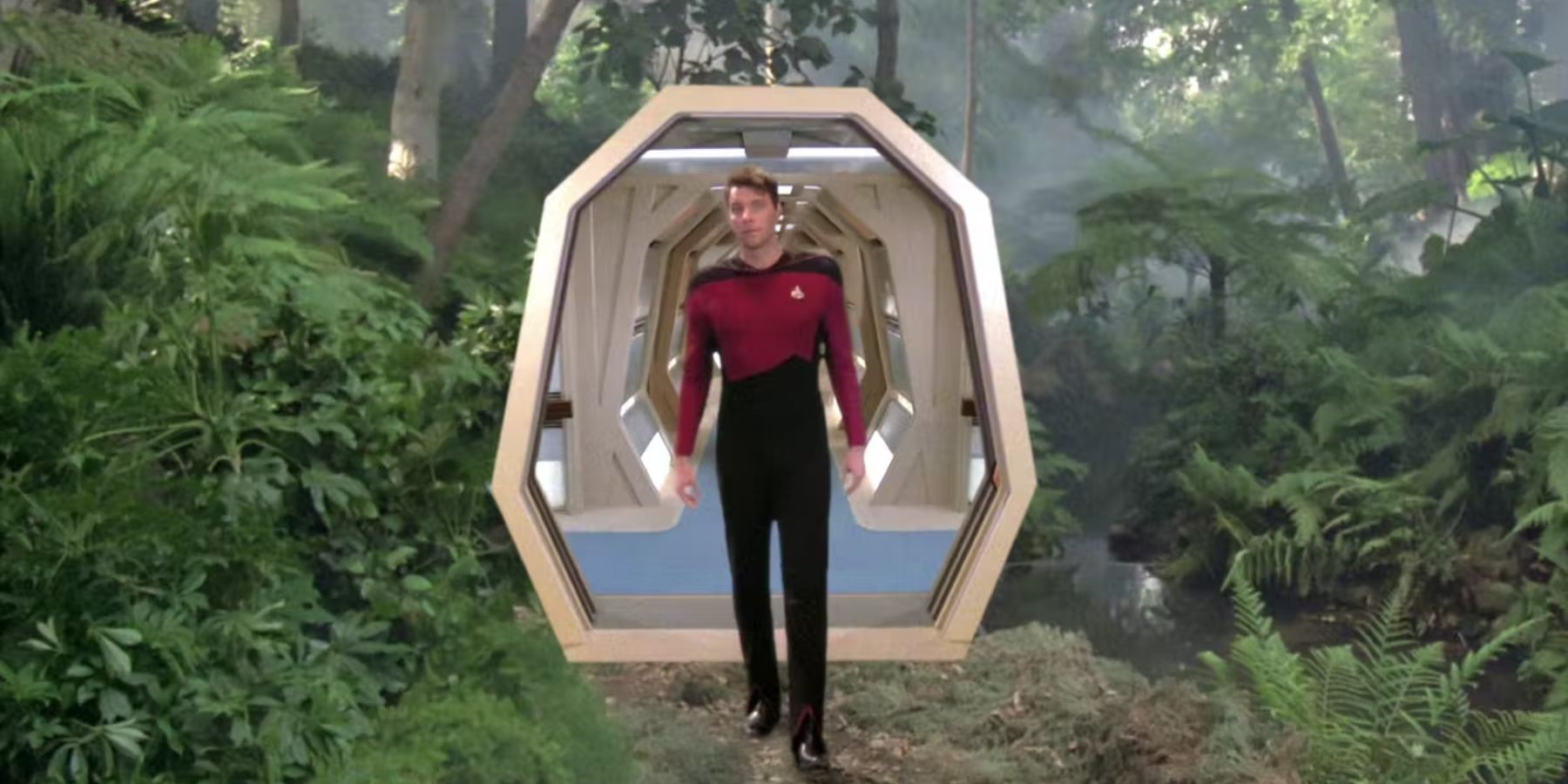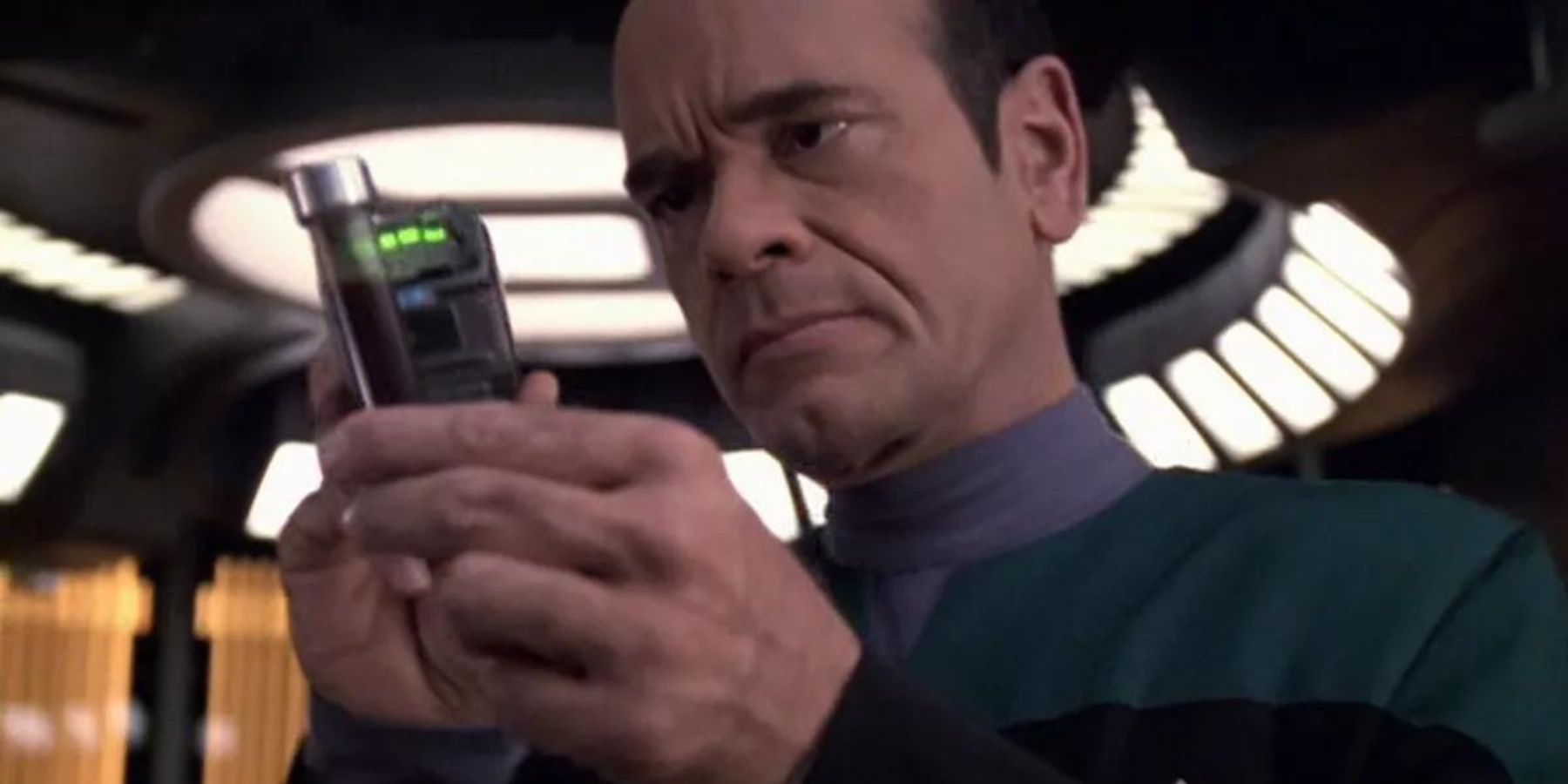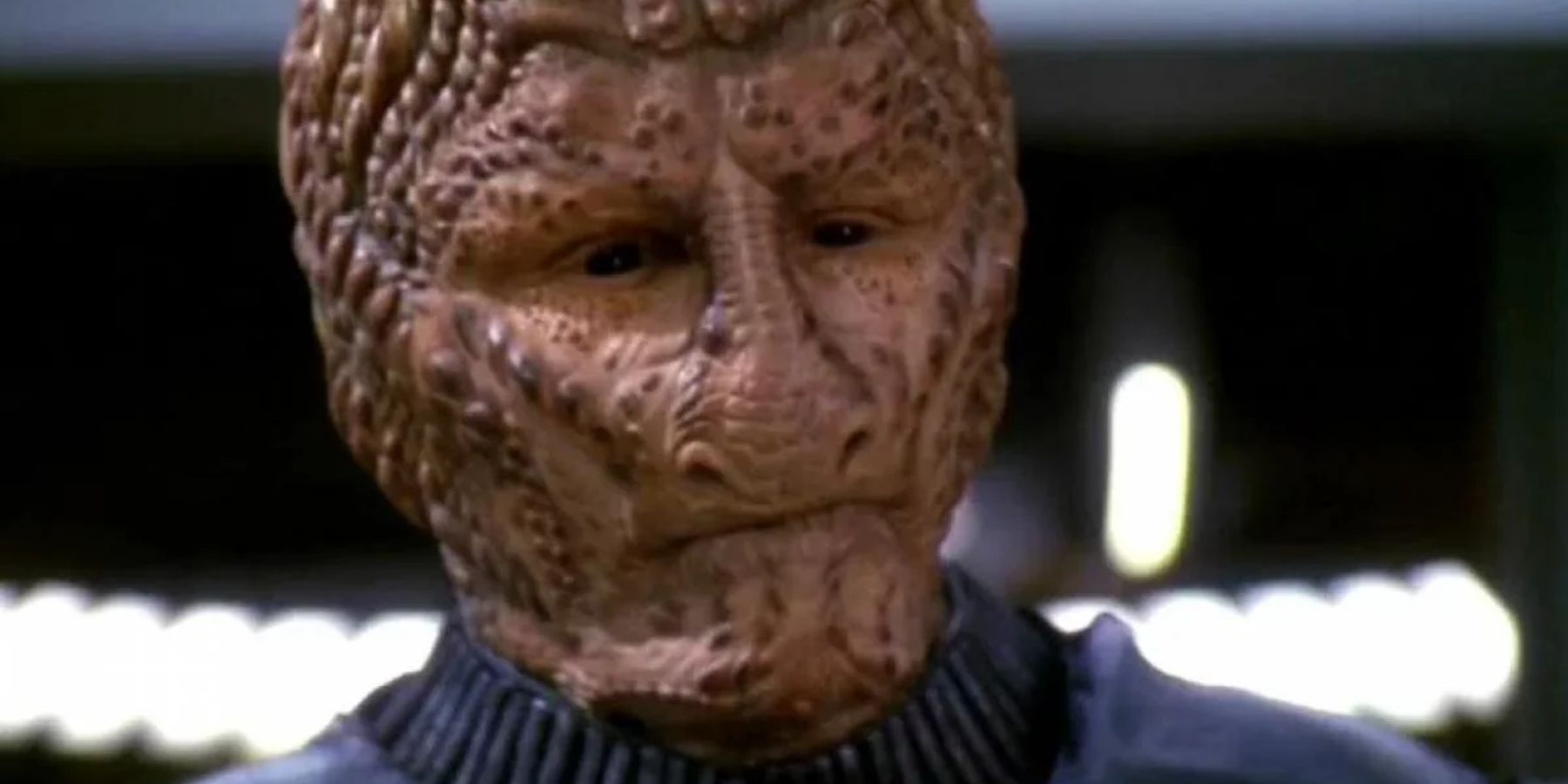The Star Trek franchise has invented a plethora of fictional technologies, from the fundamental warp drive to medical tricorders capable of detecting any injury after a quick scan. Of all the fantastic gadgets and gizmos, one of the most entertaining has to be the holodeck, an artificial reality containing anything one's heart can program. The holograms found within are created to look, feel, sound, and even smell real, from gourmet feasts to holographic people, looking and acting like real lifeforms — a huge leap from the holograms of today.
In true Westworld fashion, the moral ambiguity about whether these holographic projections are alive or not is at the philosophical heart of many episodes. Sentience within synthetic beings is a concept toyed with by Gene Roddenberry and the writers of Star Trek, focusing heavily on Data and his quest to become human, but they were also fascinated with how this could apply to holograms. Going chronologically from the time of release, the first instance of this within a hologram comes during season 2 of The Next Generation, where the ships head of engineering Geordi La Forge (played by the once promised, never given Jeopardy host LeVar Burton) accidentally gives the fictional Sherlock Holmes nemesis Moriarty enough computing power to become sentient, causing him to become self-aware to the extent that he gains control of the ship.
The other most notable example is the Doctor (not a Doctor of the Who variety) from Star Trek: Voyager, starting "life" as the ship's EMH, or Emergency Medical Hologram, a hologram designed to take over the ship's doctor for short amounts of time or in the case of emergency. Due to the premise of Voyager and their long journey home, the Doctor is activated, begrudgingly, far longer than ever before, and slowly develops more and more sentience. He forms relationships with the crew, discovers the want and need for interests and hobbies, and eventually experiences a freedom so desired after creating a mobile emitter that allows for him to leave the confines of the sickbay. He evolved so much over the years of being activated, and became sentient to the point where during season 5, he even states, “I’m as real as any of you.”
These are just two of the array of examples where Star Trek's holograms blurred the lines between what is "real" and what is not, showing their capability to evolve and gain sentience. This is also where the moral implications become problematic. Knowing that, in a sense, all holograms created are capable of being a fully sentient and feeling life form, the way they are treated becomes more and more horrifying. Just scratching the surface of this mistreatment is showcasing how holograms are basically used as slave labor and have no human rights at all. This is shown most profoundly within the Voyager episode "Author, Author" where the Doctor writes his own holo-novel (a holographic, interact-able novel), showcasing the various mistreatment of holograms, specifically the EMH Mark 1’s, forced to work in mining camps and waste disposal barges after the Mark 2’s became available. To add ironic insult to injury, his publisher releases his work without the Doctor's permission, stating that, as a hologram, he has no rights to his own work.
While this is bad in itself, it’s also worth remembering what exactly the holodecks are designed for. They are created for the enjoyment and entertainment of people. This can involve a range of things, from Indiana Jones-style adventures, to the not-so-relaxing jaunts through the forbidden west — but do not forget the depravity capable of the darkened minds of people. Death is one aspect in these narratives, with holograms being killed during holodeck adventures time and time again, either as part of a narrative or simply for the pleasure of the deck's patrons. During Voyager, Janeway gifts the Hirogen, a hunting-mad species, holodeck technology, in order to quell their murderous rampage, allowing them to hunt holograms rather than other "lifeforms." This backfires massively in true Janeway fashion, as the holograms gain sentience and escape, proceeding to hunt the Hirogen down in horrific ways as payback for years of being murdered over and over again.
The icing on the cake for holographic morality is explored in Deep Space 9, where it is revealed that holographic brothels exist. (They are never specifically called as such by name, but if it looks like a duck, and quacks like a duck…) The problematically-stereotyped Ferengi Quark rents out time in his holodeck to paying individuals for whatever activity they desire, with nothing off the table. It is established that a lot of these activities are engaging in sexual fantasies, basically resulting in using these potentially sentient beings as glorified sex toys. It’s shown during Lower Decks that this kind of behavior is not limited to those outside the purity of Starfleet, suggesting the holodecks on starships are sometimes used for pornographic purposes.
In the Star Trek universe, technology has evolved so intensely that it’s hard to differentiate between what is alive and what is not. When beings as complex as Data and the Doctor can be created, both with the (granted, somewhat accidental) ability to evolve, the barriers of what makes something alive seem to be ever-changing. These questions are what makes Star Trek so engaging, always making audiences question what they think they know, and presenting the idea that no matter how different a being is to oneself, they are always deserving of kindness, love, and respect.






